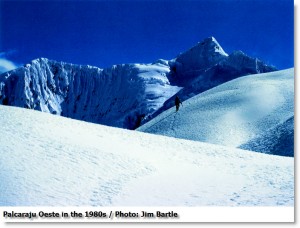The days-long search for two veteran American climbers who went missing in Peru’s Cordillera Blanca mountains ended Saturday afternoon with the discovery of their bodies.
Gil Weiss, 29, of Boulder, Colorado, and Ben Horne, 32, of Virginia, were last heard from on July 11, when they headed out toward Quebrada Cojup, a valley directly above the city of Huaraz, 285 km (177 miles) northwest of the capital, Lima.
A search intensified after concerned fellow climbers on Thursday found their empty base camp site. A larger search party discovered their bodies on the south face of Palcaraju Oeste, around 6100 m.a.s.l., where they had apparently fallen to their deaths.
“They were climbers, doing a wicked hard route which they completed! They both died on the descent, fell about 300 meters,” Chris Benway, owner of La Cima Logistics and the Cafe Andino, in Huaraz, wrote in an email to the Peruvian Times.
“We’ve all been following it quite close here in town as they were friends,” Benway added. “Many locals and visiting climbers went out looking for them in the last few days. Really sad, super nice guys … R.I.P. Ben and Gil. All of our thoughts are with their loved ones.”
Eighty percent of all cimbing accidents occur on descent.
Palcaraju Oeste, which they climbed is 6110 m.a.s.l., said Jim Bartle, a mountaineer, photographer and conservationist. “Very few people go into this valley, for whatever reason, while Ishinca to the north is always filled with people.”
Weiss and Horne were supposed to return to Huaraz on July 21-22, Bartle added. “They had climbed the face and were apparently coming down the easier west ridge, as I understand it.”
The Cordillera Blanca is a mountain climbing Mecca for thousands of visitors every year between the months of June and September. Six climbers had already died since the beginning of the year before Weiss and Horne’s fatal accident.
The friends had been blogging on the Pullharder.org site during several ascents of other peaks in the Cordillera Blanca range before tackling Palcaraju.
On July 4, they tackled the 5530m Ishinca peak, which they described as “only mildly technical by its ridges,” so they chose a slightly harder climbing route on the northwest face — “a bit more challenging and steepening to 50 degrees.”
On July 7, Horne described “wild swirling clouds morphing and blowing around us like evil vapors in a giant cauldron” during their climb of the 6162m north face of Ranrapalca.
On July 10, a day before their last fateful climb, Weiss lamented the death of a friend who had been solo climbing in California’s high Sierra Nevada. He reflected on “the awareness of self which inevitably flowers from the absurd and often dangerous situations we put ourselves in.”
“I sit here in a coffee shop in Huaraz, Peru, planning another foray into the Cordillera Blanca, where the sense that one’s life is in the hands of the mountains can be as blinding as the endless white glaciers, and a thirst for glory can darken our better judgment more than the blackness of night.”






